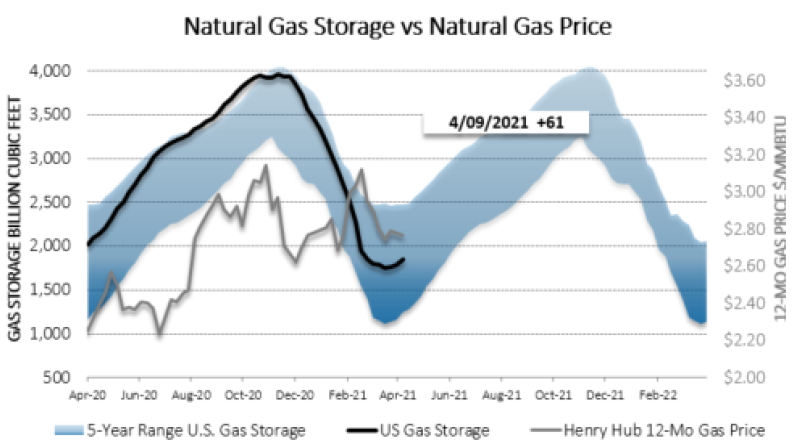POWER MARKETS

WESTDriven by unseasonably cold spring weather, which has kept demand high during the morning and nightly ramp, Day Ahead prices have been strong in CAISO and Mid-C this week. The dry conditions have limited the amount of unregulated water flowing through hydro turbines to choke supply as well. In the term market, Q3 2021 has moved up.
ERCOT Since last week, term prices have risen throughout the curve, buoyed both by surging term natural gas prices and by firming heat rates. Real-time prices have also increased impressively and now average just above $60/MWh for the month to date. Amid unusually warm weather early in the week, the increase in outages of thermal units and underperformance of renewable re-sources due to intermittency have made all of the difference. Moreover, the ORDC adder for the month is now just over $3.50/MWh, well above those of April 2020 and April 2019 ($2.70/MWh and $0.65/MWh, respectively).
EAST Once again, prices are soft. Averages haven’t moved much from last week, and no notable spikes have occurred. DART spreads are next to nothing in PJM’s West Hub and NI Hub and have the greatest magnitude in MISO’s Indiana Hub, where Real Time is higher than Day Ahead by $2/MWh. The trend is similar in NYISO’s Hudson Valley and NYC, where Real Time is a little more than $1/MWh above Day Ahead.